Along the Dutch and Belgian coast
During this road trip, we explore the Dutch and Flemish coast. The North Sea has a unique appeal and has made the Low Countries what they are today. For centuries, seafarers and traders have departed from the major port cities to all corners of the world. And they bring back riches with them.
We start in Noord-Holland in Alkmaar and then follow the Dutch coastline. Via the Terneuzen canal we head for Cadzand and reach Belgium via Het Zwin and Knokke-Heist. Next on the route are the most famous Flemish coastal towns. Of course, you can also follow the route in the opposite direction.
Total distance of the route: 456 km
The Golden Age of Holland
We start our road trip in Alkmaar, the cheese town of Holland. Whether you like cheese or not, you can't miss a visit to the Cheese Museum. Apart from cheese, the city has a lot more to offer and is the perfect kick-off for our roadtrip along the Dutch and Belgian coast. In Alkmaar, you will learn all about the Golden Age of Holland. The Stedelijk Museum introduces you to the city's rich history with a wonderful collection. By the way, did you know that there is a Beatles museum in Alkmaar?
After Alkmaar, we continue to Haarlem, close to the beach on the river Spaarne. After a few hours of wandering along monumental buildings and beautiful old squares, we enjoy our time in a cosy bar. Haarlem is not called the most Flemish city of the north for nothing. Be sure to walk along one of the twenty almshouses that the city counts. Next stop: Amsterdam. A lot has already been written about Amsterdam, too much to mention here. What we can say for sure: in this world-famous 17th century city, you can easily spend a weekend without getting bored.
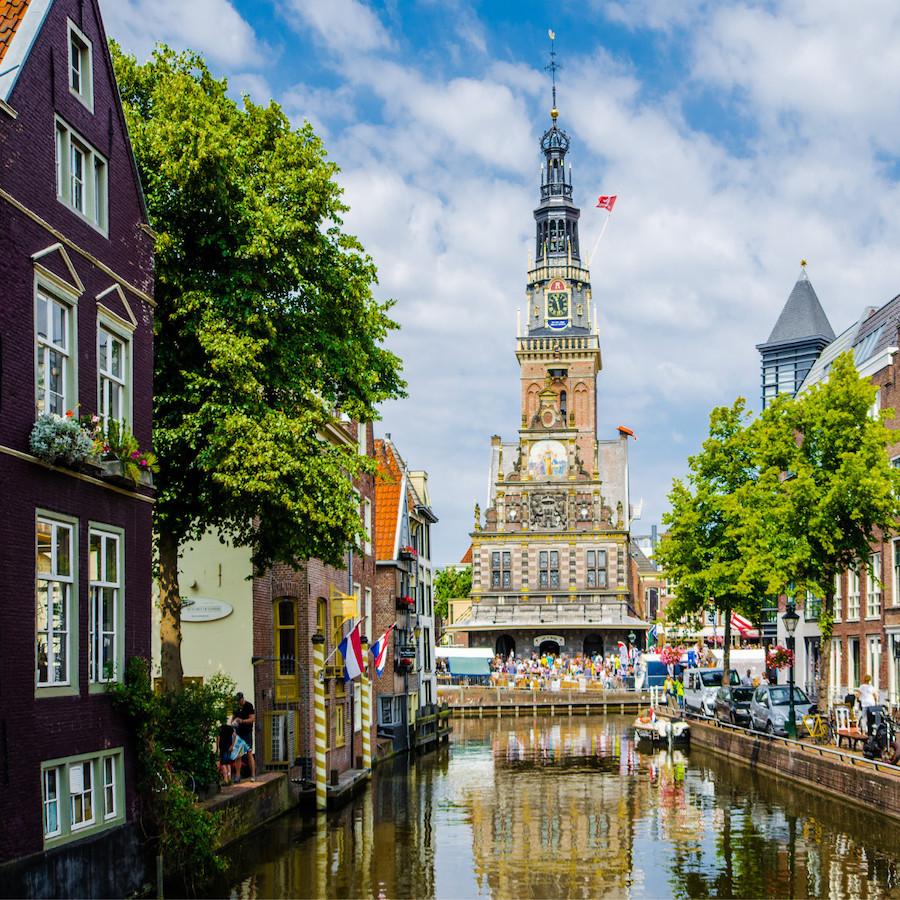
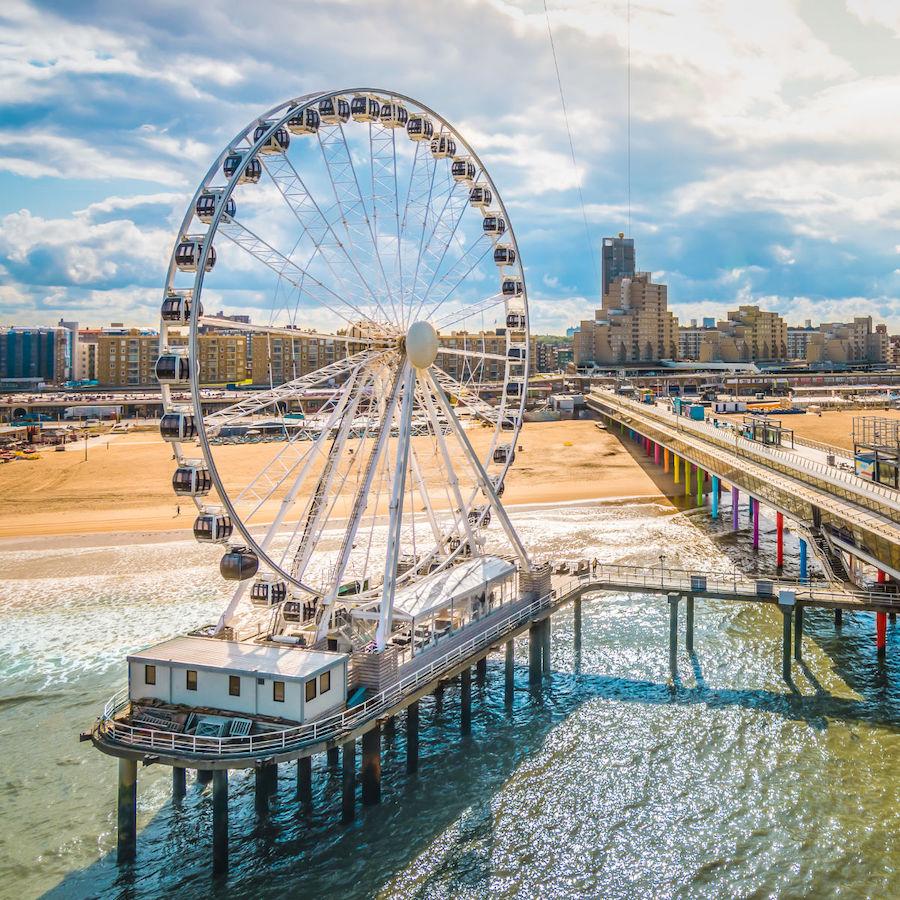
Leiden & The Hague
We set sail for Leiden and The Hague. Leiden is a real university town, known above all as the birthplace of the world-famous old master Rembrandt. After Amsterdam, Leiden has the most waterways and bridges. If you are doing the route during the summer, it is certainly worthwhile discovering the canals from a boat. After a visit to the city, you can go into the countryside and explore the surroundings of Leiden. You can sail on the Kagerplassen, sunbathe on the beach of Katwijk or make a bike tour through the Bollenstreek.
The Hague is the only large city with a beach directly on the North Sea coast. In addition, The Hague serves as the administrative and legal heart of the Netherlands. One of the nicest beaches in the area is the beach at Scheveningen. It is, without a doubt, the most popular beach in the Netherlands. You can walk, sunbathe, swim, surf, attend events and eat delicious food there. The wide, long boulevard and the lovely beaches are a real attraction. Sports enthusiasts can indulge themselves at one of the many surfing facilities with surf schools, a surf village and even an artificial reef that provides good waves all year round.
Rotterdam
Halfway between The Hague and Rotterdam lies the lovely town of Delft. Delft charms many people with its historical centre and the many canals. The city is known for its famous "Delft Blue". Delft is a nice stop before we drive on to Europe's largest port and the 'Maashattan' of the Netherlands: Rotterdam. Rotterdam has many faces, on the one hand it is a tough port city where container terminals and warehouses are lined up over a distance of 20 km. On the other hand, Rotterdam is a trendy nightlife city, a chic shopping city - just think of the large Markthal and the indoor shopping centre - but also a hip artists' city. As the nickname 'Maashattan' suggests, Rotterdam is known for its architecture and ever-changing skyline. Modern high-rise architecture occupies an important place there. A day in Rotterdam therefore promises a varied programme of art, architecture, shopping and not forgetting trendy places to eat.
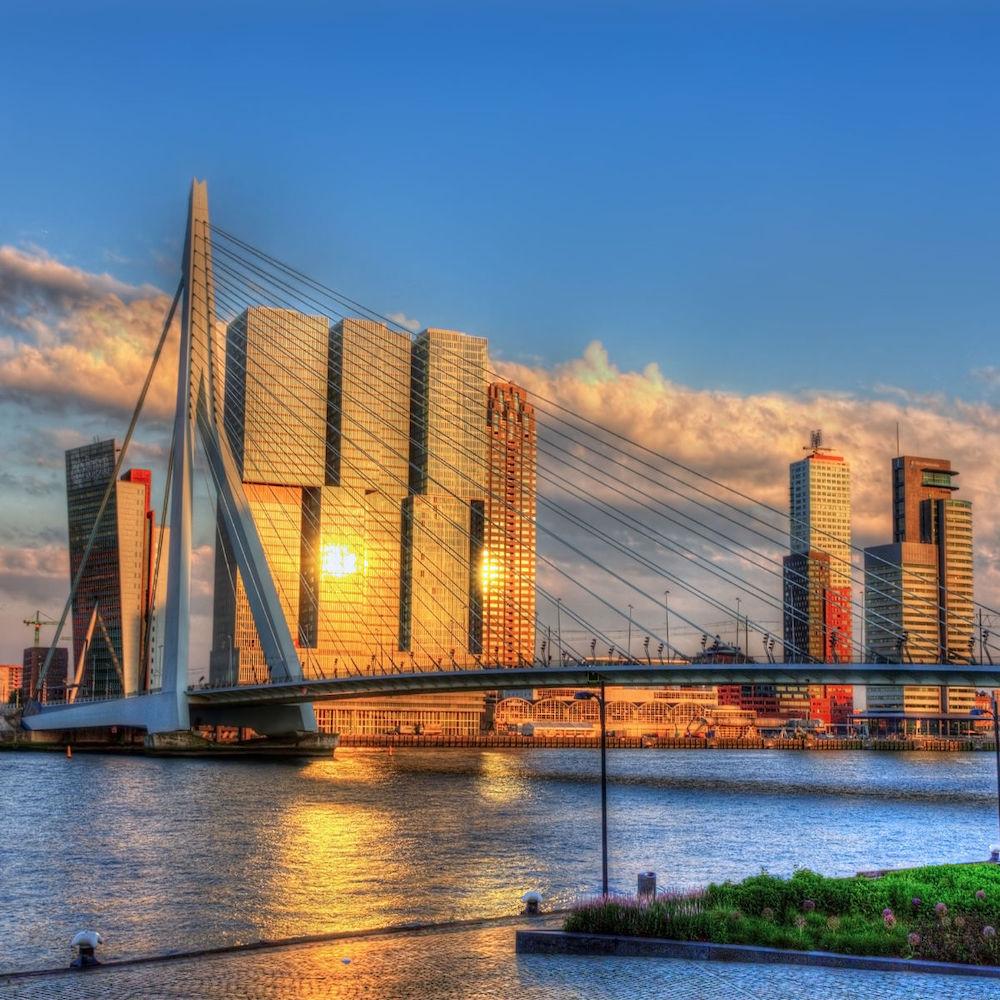
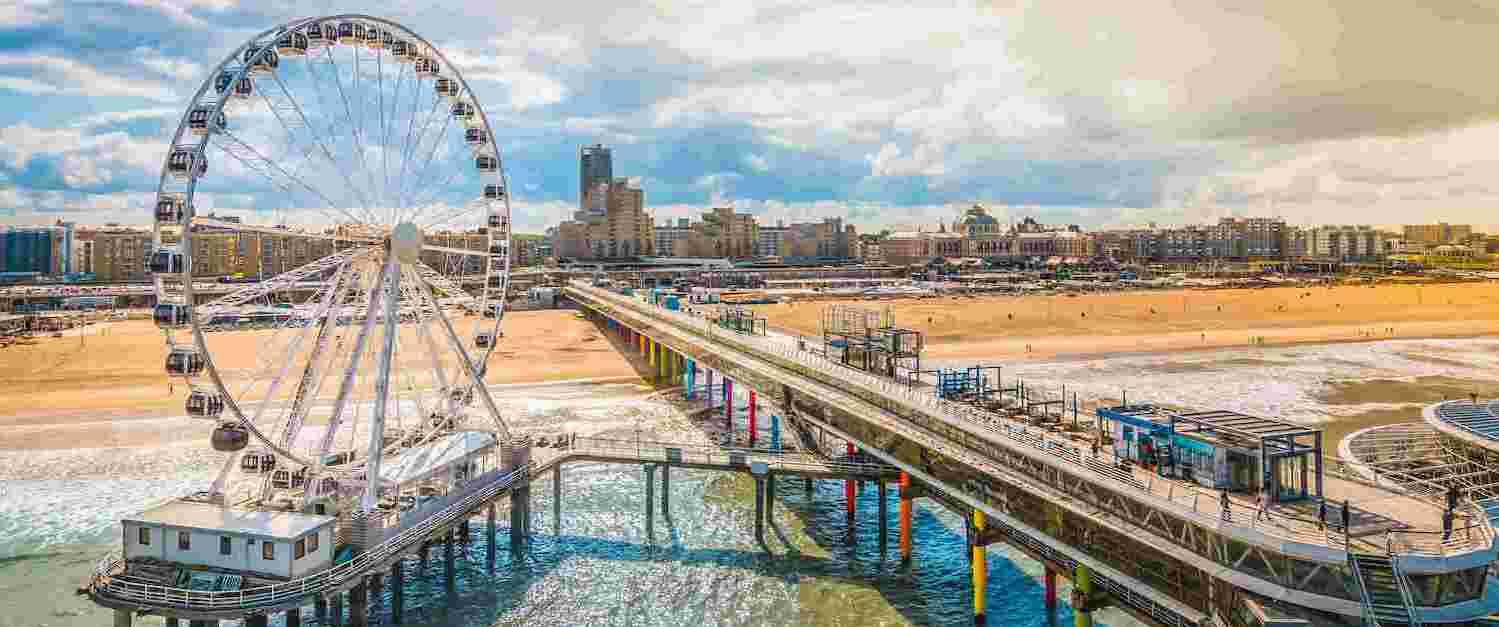
Zeeland
On this part of the route, we will cross the Nieuwe Maas and Oude Maas rivers and then explore Zeeland via the Haringvliet Bridge and the Grevelingendam.
Zierikzee is a charming port city with more than 500 monuments! This number places the city in the top 10 of Dutch monument cities. We took a pleasant stroll through the impressive silhouette of the city walls and gates, churches, towers, windmills and lovely boutiques in authentic houses.
The next Zeeland town is Middelburg, a town that can be traced back to the 9th century when the Vikings invaded Europe. During the time of the VOC, Middelburg was - after Amsterdam - the most important city of the Netherlands and that rich history is still visible. After wandering around the cosy streets, we ended up at the Markt for a bite to eat and a drink. We got a breath of fresh air on the Westerschelde estuary in Vlissingen, the city with the longest boulevard in the Netherlands.
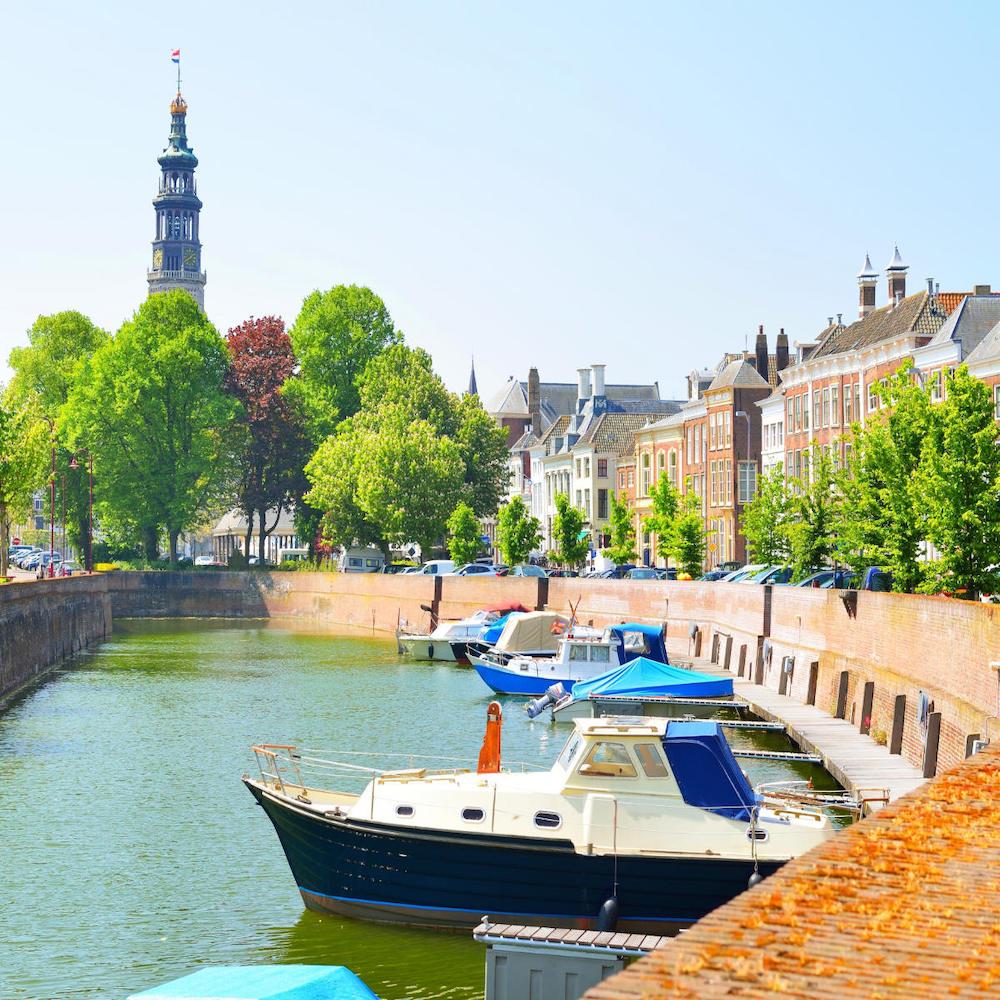
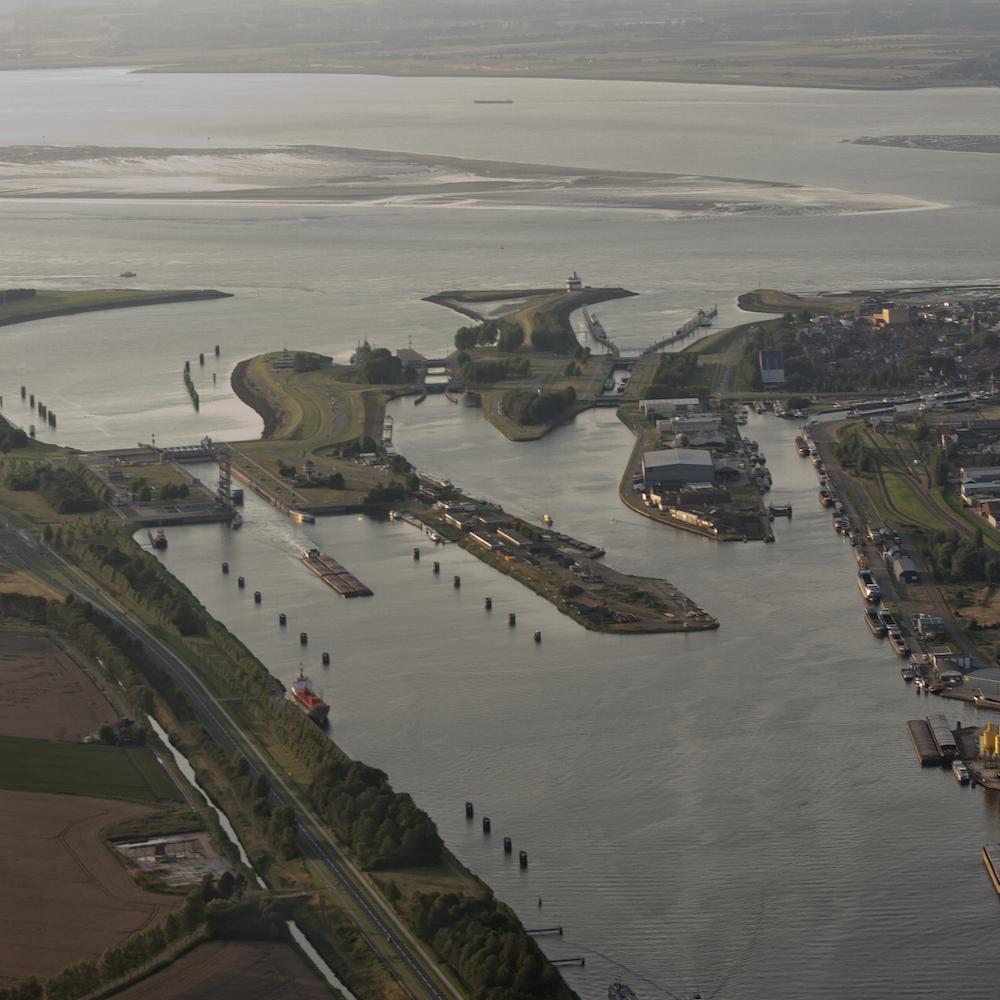
Terneuzen
As a city, Terneuzen is strongly linked to water and this is visible everywhere. It is a port city par excellence, known for its lock complex and the important Ghent-Terneuzen Canal. Via the Portaal van Vlaanderen, you can discover the maritime world of Terneuzen. You can learn all about ships and locks and even assume the role of captain for a change. Did you know that Terneuzen is also the home port of Willem Van der Decken, captain of the ghost ship 'De Vliegende Hollander'? Against all odds, the ship set sail on Easter Sunday, but never returned.
We took a walk on the Scheldt boulevard where you can almost touch the ships sailing on the Westerschelde. Not far from the Belgian-Dutch border is Cadzand. Cadzand consists of two villages: Cadzand-Bad (on the sea) and Cadzand-Dorp (a little further inland). Both the coast and the vast polder of West-Zeeuws-Vlaanderen are worth a visit.
Across the border: the Zwin and Knokke-Heist
Let's face it, the Flemish coast is a string of towns, villages and districts. A wall of apartment buildings separating the sea and the beach from the inland. But the Belgian coast also has its charms. First on our agenda: a long walk in the Zwin nature reserve. This large nature reserve lies partly in Zeeland and partly in West Flanders and is an attraction for all kinds of birds. Throughout the entire reserve, you will find observation huts. If bird watching is not your thing, you can also just enjoy this beautiful piece of nature.
In Knokke-Heist you have several beaches. The most beautiful stretch is in Het Zoute, where the background is formed by dunes and pine forest. On the other side is the nature reserve De Baai van Heist. You can explore Knokke from the dyke, while walking with an ice cream in your hand. The seaside resort also offers plenty of other entertainment: from sailing, surfing, SUP and kiting to an evening in the famous casino. Tip from locals: let yourself be pampered culinarily in restaurant 't Werftje in Zeebrugge!
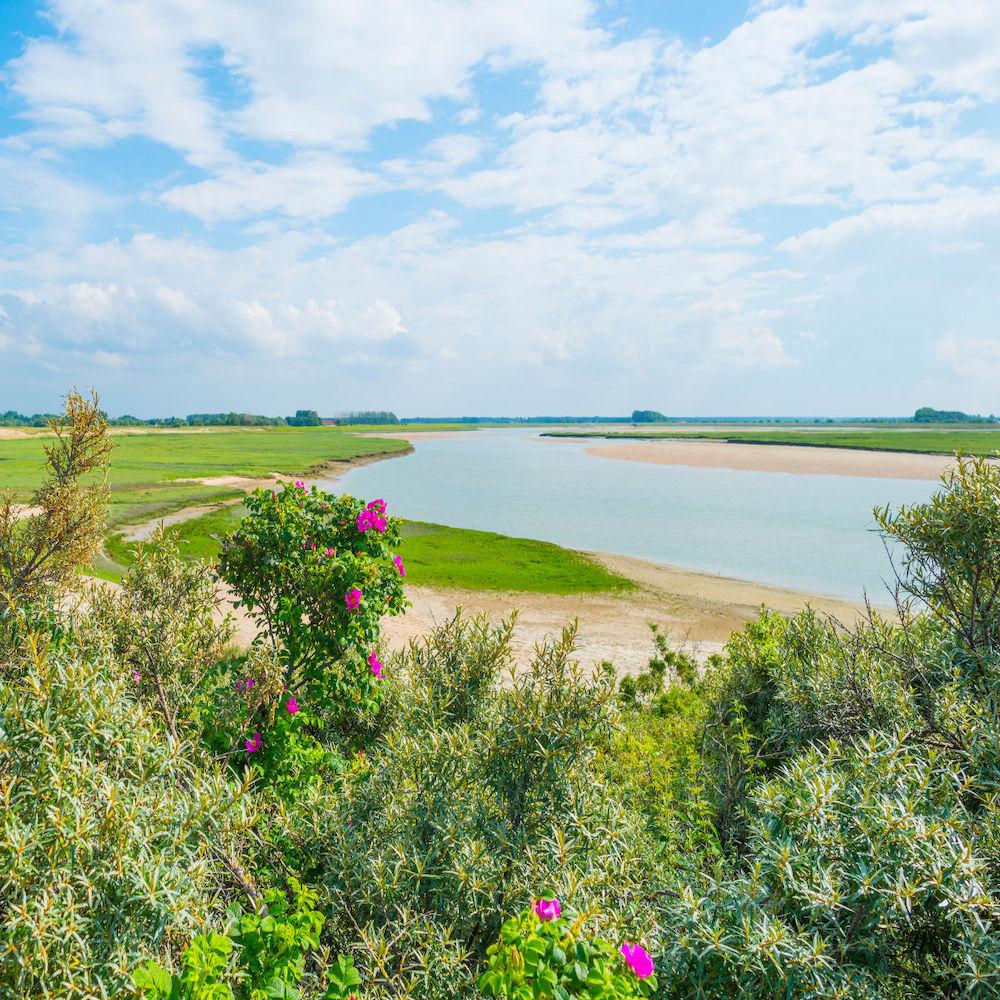

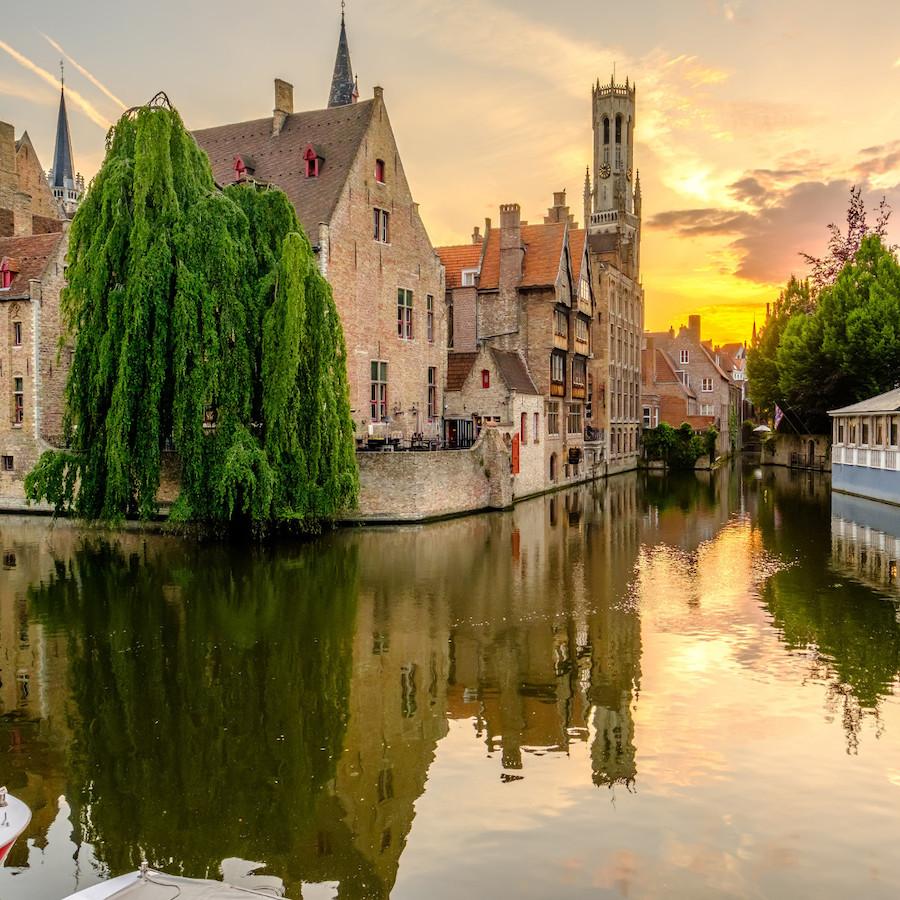
Bruges
After a wonderful day at the beach, we take a trip to Bruges, one of the most visited cities in Belgium. Bruges is a well-preserved textbook example of medieval town planning. For a long time, 'Bruges that scone' was the richest city in Flanders. All the important trading houses had a branch in the city and the dukes of Burgundy had a residence full of pomp and circumstance. Artists such as Jan van Eyck and Hans Memling were also attracted to the city. The centre of Bruges is the Grote Markt (Market Square) where colourful knightly tournaments were held. There you will also find the Belfry, the 83m high city tower. In Bruges, you can stroll along the canals and marvel at the many bourgeois and merchant houses from the 14th and 15th centuries, the Tolhuis and the Hof van Gruuthuse. In the gothic Onze Lieve Vrouwekerk, you will find one of Bruges' greatest art treasures: the Bruges Madonna (1503), the first work by Michelangelo to leave Italy during his lifetime. Meanwhile, Bruges is also more than a historical attraction. Enthusiasts can shop, eat out or explore the Bruges countryside.
Ostend
After Bruges, we head for the coast again, this time to Blankenberge and Ostend. The only pier along the Belgian coast can be found in Blankenberge, which attracts families and surfers. By the way, did you know that this is the first pier on the European mainland? The pier was built in 1933, just before the one in Scheveningen. Furthermore, the Blankenberge pier serves as an exhibition area, there are several restaurants and it is a promenade. Don't want to see towering apartment buildings? Then you have to go to De Haan, no flat blocks, but belle-epoque villas.
In Ostend, you can take a lovely walk under the Venetian galleries on the boulevard. The classical colonnade is often used as a public exhibition space. In the open-air museum Atlantikwall Raversyde, you will find a part of the infamous German defence system, the Atlantikwall. The Atlantic Wall dates back to the Second World War and is a two-kilometre-long network of tunnels and trenches that connect around sixty buildings and structures. In the bunkers, lifelike situations are recreated to give visitors an idea of what it must have been like. Not far from there, you can also see the reconstructed fishing settlement of Walraversijde.
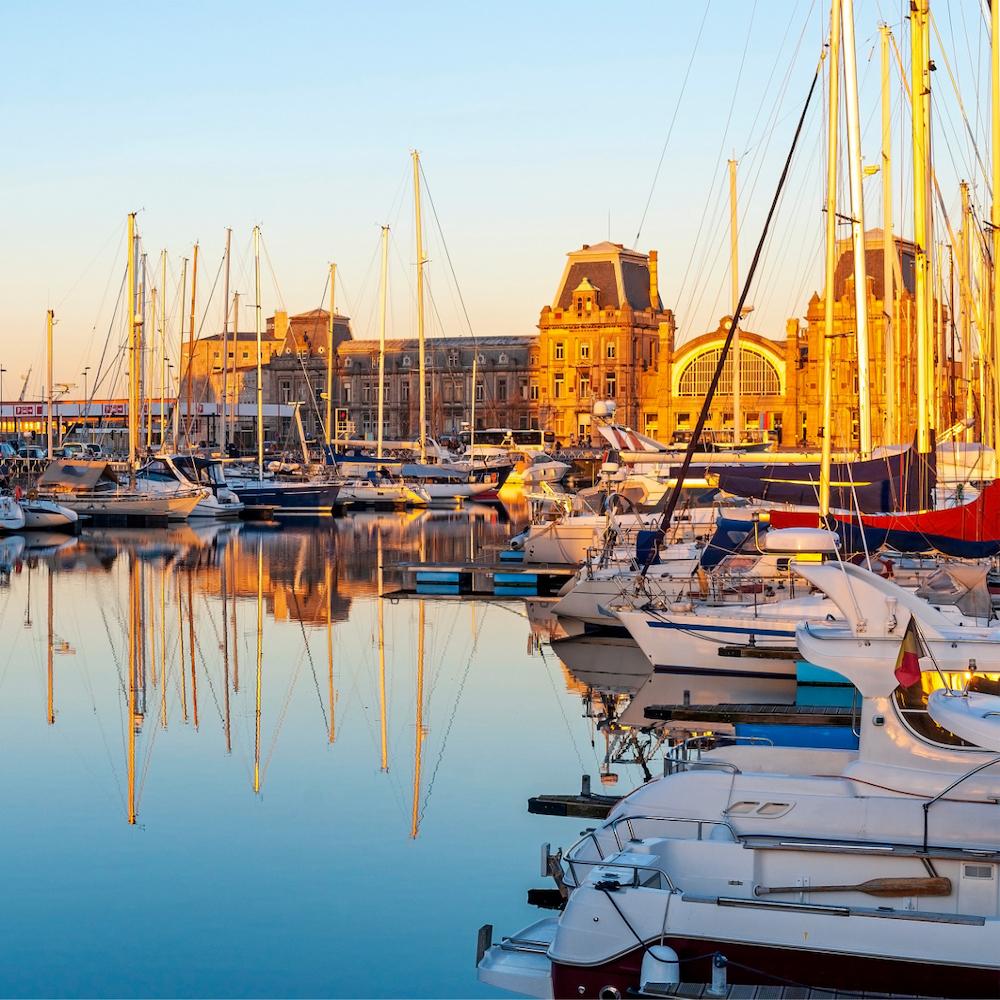
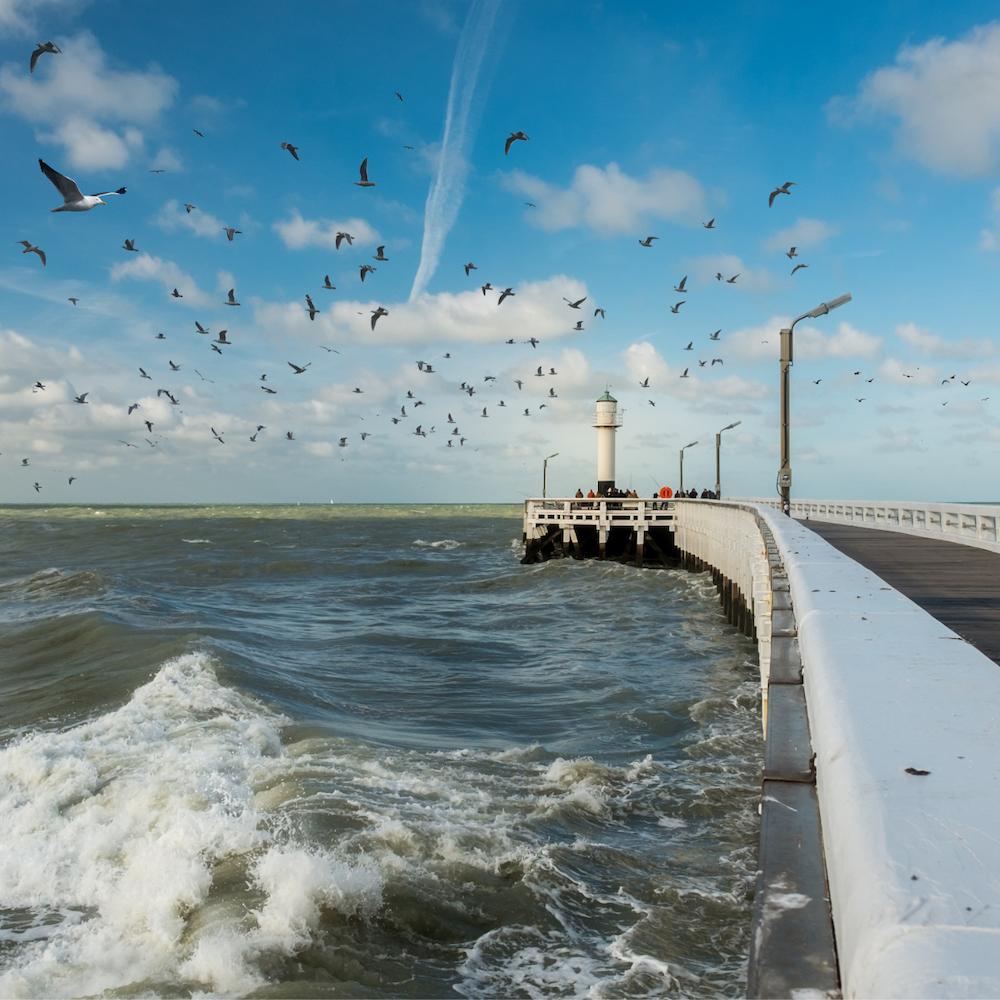
Nieuwpoort
Nieuwpoort has the largest marina in Northern Europe. But the town has also been marked by the World Wars. The King Albert Memorial bears witness to this. On the initiative and with the support of the associations of veterans of the First World War, the monument was built on the banks of the Yser. The memorial dates from 1938 and was designed by Julien de Ridder. Nieuwpoort consists of Nieuwpoort and Nieuwpoort-Bad, the latter being situated on the sea front. Just like the other Belgian coastal towns, you can enjoy the beach and the dunes, go shopping, eat well and see a lot of art and culture. Nature lovers can visit the De IJzermonding nature reserve where the fresh water of the IJzer river mixes with the salty sea water. Together with the adjacent marinas, the reserve forms a wonderful resting place for seals. You can admire the animals, but from a distance. If you have not yet done so, it may be a nice idea to rent a go-kart and explore the dike.
Koksijde & De Panne
Last but not least: Koksijde and De Panne. On our roadtrip through the Westhoek, we already went to these two coastal towns. Here you find the largest dune massif on our coast. The West Coast really invites for long walks through the dunes or on the beach. De Panne offers next to this nature reserve also the widest beach of Belgium. Had enough of the coast for a while? In De Panne, you can visit the famous amusement park Plopsaland. An unforgettable day out for young and old.
In Koksijde, you can spot shrimp fishers on horseback at low tide. Shrimp fishermen are recognised by Unesco as protected heritage in Belgium.
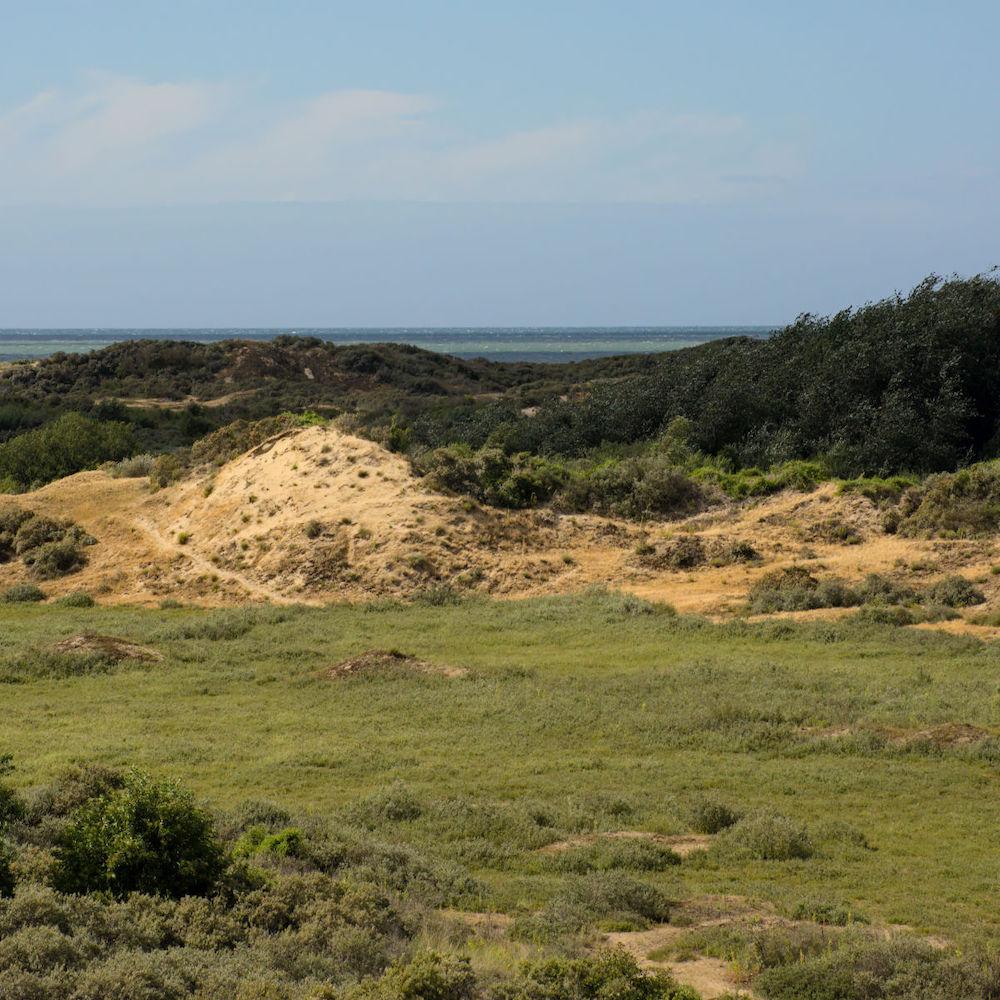
Do you still have some vacation time left and haven't run out yet? Then combine this route with the road trip Flanders Fields.

